BEST-121 粉体电阻率测试仪*
| 参考价 | 面议 |
- 公司名称 北京北广精仪仪器设备有限公司
- 品牌
- 型号 BEST-121
- 所在地 北京市
- 厂商性质 生产厂家
- 更新时间 2021/4/27 14:59:40
- 访问次数 558
联系方式:陈丹 18911395947 查看联系方式
联系我们时请说明是仪器网上看到的信息,谢谢!
| 参考价 | 面议 |
联系方式:陈丹 18911395947 查看联系方式
联系我们时请说明是仪器网上看到的信息,谢谢!
粉体电阻率测试仪* 适用于防静电产品 如防静电鞋、防静电塑料橡胶制品、计算机房防静电活动地板等电阻值的检验以及绝缘材料和电子电器产品的绝缘电阻测量。
粉体电阻率测试仪* 采用了美国Intel公司的大规模集成电路,使仪器体积小、重量轻准确度高。数字液晶直接显示电阻值和电流。量限从1×104Ω ~1×1018 Ω,是目前国内测量范围宽,准确度zui高的数字超高阻测量仪。电流测量范围为2×10-4 ~1×10-16A。机内测试电压10V/50V/100V/250V/500V/1000V任意可调。本仪器既可测量高电阻,又可测微电流。本仪器具有精度高、显示迅速、性好稳定、读数方便. 适用于橡胶、塑料、薄膜、地毯、织物及粉体、液体、及固体和膏体形状的各种绝缘材料体积和表面电阻值的测定。
粉体电阻率测试仪* 典型应用
1.测量防静电鞋、导电鞋的电阻值
2、测量防静电材料的电阻及电阻率
3、测量计算机房用活动地板的系统电阻值
4、测量绝缘材料电阻(率)
5、光电二极管暗电流测量
6、物理,光学和材料研究
粉体电阻率测试仪* 工作原理
根据欧姆定律,被测电阻Rx等于施加电压V除以通过的电流I。BEST121型数字高阻计是同时测出电阻两端的电压V和流过电阻的电流I,通过内部的大规模集成电路完成电压除以电流的计算,然后把所得到的结果经过A/D转换后以数字显示出电阻值,即便是电阻两端的电压V和流过电阻的电流I是同时变化,其显示的电阻值不象普通高阻计那样因被测电压V的变化或电流I的变化而变,所以,即使测量电压、被测量电阻、电源电压等发生变化对其结果影响不大,其测量精度很高,从理论上讲其误差可以做到零,而实际误差可以做到千分之几或万分之几。
标准配置:
1.测试仪器:1台
2.电源线:1条
3.测量线:3根(屏蔽线、测试接线、接地线)
4.使用说明书:1份
Standard configuration:
1. Testing instruments: 1 set
2. Power cord: 1
3. Measuring line: 3 (shielding line, test connection, grounding line)
4. Instructions: 1
5. Product Qualification Certificate: 1
使用说明
(一)应满足下例要求:
1、测试电压范围应包括:100V~500V
2、测量范围应包括:1×106Ω~1×1017Ω
3、阻值大于1012Ω时,测量误差应小于±20%,阻值不大于1012Ω时,测量误差应小于±10%。
4、输入接线的绝缘电阻应大于仪器输入电阻的100倍。
5、测试时试样及测量导线应有良好。
6、仪器应定期进行校验。
(二)准备工作:
1、取被测液体(如:增塑剂)试样50ml。
2、试样应在温度23±2℃,相对湿度65±5%的条件下处理2小时以上。
(三)测试步骤:
1、测试温度23±2℃,相对湿度65±5%,无外界电磁场干扰环境中进行。
2、测试时对试样所加电压为100V~500V的直流电压,选择电压档次。
3、将试样倒入高压电极内,使液面刚好和环电极下缘全部接触为止。
4、将充分放电后的试样和电极,按固体(液体)体积及表面电阻率测试仪要求接线。
外电极(高压电极)接高固体(液体)体积及表面电阻率测试仪的高压输出端。
内电极(测量电极)接固体(液体)体积及表面电阻率测试仪的测量端。
中电极(环电极)接固体(液体)体积及表面电阻率测试仪的接地端。
5、仪器预热30分钟,稳定后调整仪器(调零),加上试验1分钟,读取电阻指示值,然后放电1分钟,再测试一次,以二次的算术平均值作为试验样品电阻指示值。
(四)计算方法:
按式(1)计算体积电阻系数(pv),计算结果取二位有效数字。
(五)注意事项:
1、测定电极必须放置在高绝缘的垫板上。
2、测定电极在测试前后,均应做好清洗工作,特别是三只电极的支撑件不得受到试样的污染
技术参数:
1、电阻测量范围 1×104Ω ~1×1018Ω
2、电流测量范围 2×10-4A~1×10-16A
3、显 示 方 式 数字液晶显示
4、内置测试电压 10V 、50V、100V、250V、500V、1000V
5、基本准确度 1%
6、使用环境 温度:0℃~40℃,相对湿度<80%
7、供电形式 AC 220V,50HZ,功耗约5W
8、仪器尺寸 285mm× 245mm× 120 mm
9、质量 约5KG
10、体积小、重量轻、准确度高 电阻、电流双显示,性能好稳定、读数方便
产品介绍:
电流测量范围为2×10-4 ~1×10-16A。机内测试电压为100/250/500/1000V任意可调。本仪器具有精度高、显示迅速、性好稳定、读数方便,适用于防静电产品如防静电鞋、防静电塑料橡胶制品、计算机房防静电活动地板等电阻值的检验以及绝缘材料和电子电器产品的绝缘电阻测量。本仪器除能测电阻外,还能直接测量微弱电流。Current measurement ranges from 2 x 10-4 to 1 x 10-16A. The in-machine test voltage is 100/250/500/1000V and can be adjusted arbitrarily. This instrument has high precision, fast display, good stability and easy reading. It is suitable for the test of resistance values of anti-static products such as anti-static shoes, anti-static plastic rubber products, anti-static movable floor in computer room and the measurement of insulation resistance of insulating materials and electronic and electrical products. This instrument can measure not only resistance but also weak current directly.
意义
1 通常,绝缘材料用于将电气系统的各部件相互绝缘和对地绝缘;固体绝缘材料还起机械支撑作用。
对于这些用途,一般都希望材料具有尽可能高的绝缘电阻,有均匀*的、得到认可的机械、化学和耐热性能。表面电阻随湿度变化很快,而体积电阻随温度变化却很慢,尽管其终的变化也许较大。Generally, insulating materials are used to insulate the components of the electrical system from each other and to the ground; solid insulating materials also act as mechanical support.
For these purposes, it is generally expected that the material will have as high an insulation resistance as possible, with uniform, recognized mechanical, chemical and heat-resistant properties. Surface resistance varies rapidly with humidity, while volume resistance varies slowly with temperature, although the final change may be larger.
2体积电阻率能被用作选择特定用途绝缘材料的一个参数。电阻率随温度和湿度的变化显著变化,因此在为一些运行条件而设计时必须对其了解。体积电阻率测通常被用于检查绝缘材料生产是否始终如一,或检测能影响材料质量而又不能用其他方法检测到的导电杂质。Volumetric resistivity can be used as a parameter for selecting insulating materials for specific purposes. Resistivity varies significantly with temperature and humidity, so it must be understood when designing for some operating conditions. Volumetric resistivity measurements are usually used to check the consistency of insulating material production or to detect conductive impurities that can affect the quality of the material but cannot be detected by other methods.
3当一直流电压加在与试样相接触的两电极之间时,通过式样的电流会减小到一个稳定值。
电流随时间的减小可能是由于电介质极化和可动离子位移到电极所致。对于体积电阻率小于
10Ω·m的材料,其稳定状态通常在一分钟内达到,因此,经过这个电化时间后测定电阻。对于体积电阻率较高的材料,电流减小的过程可能会持续到几分钟、几小时、几天甚至几星期。因此对于这样的材料,采用较长的电化时问,且如果合适,可用体积电阻率与时闯煞关系束籀述材料的特性。When a DC voltage is applied between two electrodes in contact with the specimen, the current through the pattern will be reduced to a stable value.
The decrease of current with time may be due to the polarization of dielectrics and the displacement of movable ions to electrodes. For volume resistivity less than
The stable state of 10_ m material is usually achieved in one minute, so the resistance is measured after this electrochemical time. For materials with high volume resistivity, the process of current reduction may last for several minutes, hours, days or even weeks. Therefore, for such materials, long electrochemical time is used, and if appropriate, the characteristics of materials can be described by the relationship between volume resistivity and time breaking.
4 由于或多或少的体积电导总是要被包括到表面电导测试中去,因此不能精确只能近似的测量表面电阻或表面电导。测得的值主要反映被测试样表面污染的特性。而且试样的电容率影响污染物质的沉积,它们的导电能力受试样的表面特性所影响。因此表面电阻率不是一个真正意义的材料特性,而是材料表面含有污染物质时与材料特性有关的一个参数。Since more or less volume conductance is always included in surface conductance measurement, it is not possible to measure surface resistance or surface conductance accurately but approximately. The measured values mainly reflect the surface contamination characteristics of the tested samples. Moreover, the capacitance of the sample affects the deposition of pollutants, and their conductivity is affected by the surface characteristics of the sample. Therefore, the surface resistivity is not a material property of real significance, but a parameter related to the material property when the material surface contains contaminants.
某些材料如层压材料在表面层和内部可能有很不同的电阻事。因此测量清洁的表面的内在性能是有意义的。应完整地规定为获得*的结果而进行清洁处理的程序,并要记录清洁过程中溶剂或其他因素对于表面特性可能产生的影响。Certain materials, such as laminates, may have very different resistances in the surface and in the interior. Therefore, it is meaningful to measure the intrinsic properties of clean surfaces. Procedures for cleaning to achieve consistent results should be fully defined, and possible effects of solvents or other factors on surface properties during cleaning should be recorded.
表面电阻,特别是当它较高时,常以不规则方式变化,且通常非常依赖于电化时闯。因此,测量时通常规定一分钟的电化时间。
Surface resistance, especially when it is high, often varies irregularly and usually depends heavily on electrochemical breakdown. Therefore, one minute of electrification time is usually set for measurement.
符合标准:
GB/T 1410-2006 固体绝缘材料 体积电阻率和表面电阻率试验方法
GB 12014 防静电工作服
GB/T 20991-2007 个体防护装备 鞋的测试方法
GB 4385-1995 防静电鞋、导电鞋技术要求
GB 12158-2006 防止静电事故通用导则
GB 4655-2003 橡胶工业静电安全规程
GB/T 12703.4-2010 纺织品 静电性能的评定 第4部分 电阻率
GB/T 12703.6-2010 纺织品 静电性能的评定 第6部分 纤维泄漏电阻
GB 13348-2009 液体石油产品静电安全规程
GB/T 15738-2008 导电和抗静电纤维增强塑料电阻率试验方法
GB/T 18044-2008 地毯 静电习性评价法 行走试验
GB/T 18864-2002 硫化橡胶 工业用抗静电和导电产品 电阻极限范围
GB/T 22042-2008 服装 防静电性能 表面电阻率试验方法
GB/T 22043-2008 服装 防静电性能 通过材料的电阻(垂直电阻)试验方法
GB/T 24249-2009 防静电洁净织物
GB 26539-2011 防静电陶瓷砖 Antistatic ceramic tiles
GB/T 26825-2011 抗静电防腐胶
GB 50515-2010 导(防)静电地面设计规范
GB 50611-2010 电子工程防静电设计规范
GJB 105-1998-Z 电子产品防静电放电控制手册
GJB 3007A-2009 防静电工作区技术要求
GJB 5104-2004 无线电引信风帽用防静电涂料及风帽静电性能通用要求
测试电压(V)
DC—10V
DC—50V
DC—100V
DC—500V
DC—1000V
测量常见问题:
.1 为什么在测量同一物体时用不同的电阻量程有不同的读数?
.2 为什么测量一些物体的电流时用不同的量程也会出现测出结果相差较大?
.3 为什么测量时仪器的读数总是不稳?
.4 为什么测量完毕时一定要将量程开关再拨到104档后才能关电源?
.5 为什么在测量电阻过程中不要改变对被测物的测试电压?
.6 为什么测量完毕要将电压量程开关再拨到10V档后关闭电源?
北广电性能产品:
体积表面积电阻率测试仪、电压击穿试验仪、介电强度试验仪,耐电压击穿试验仪,介电常数与介质损耗测试仪,电容率测试仪,耐电弧测试仪,高压漏电起痕测试仪。



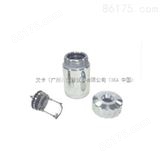
|
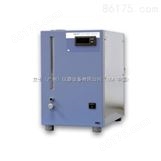
|
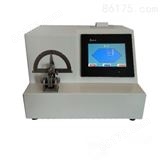
|
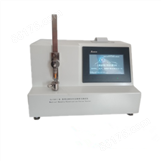
|
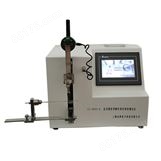
|
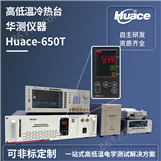
|
*您想获取产品的资料:
个人信息: